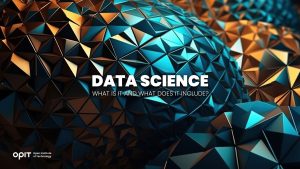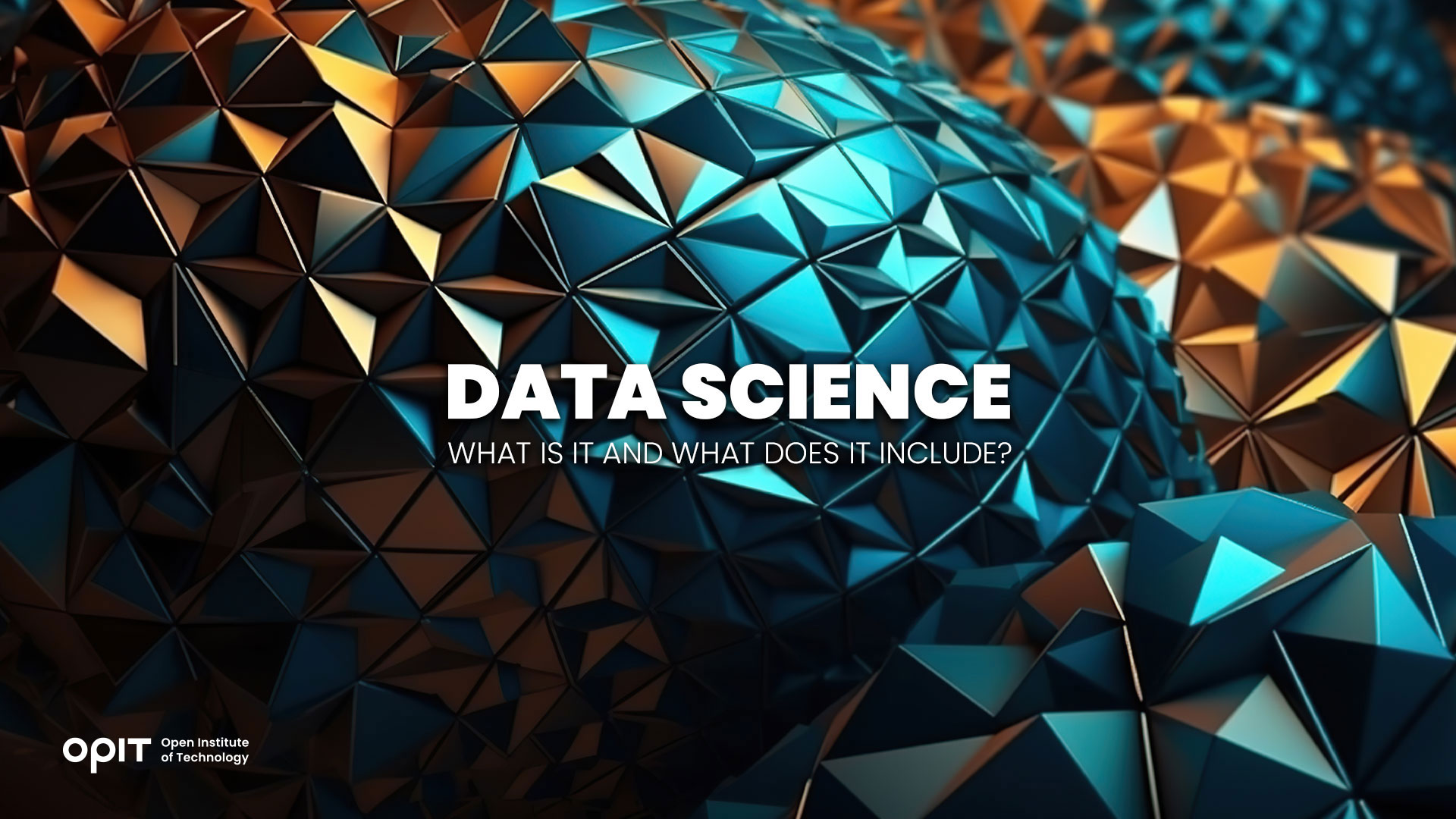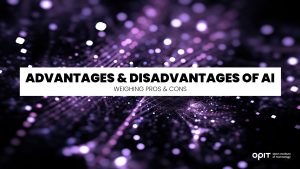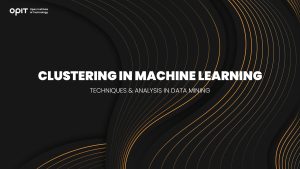

More and more companies are employing data scientists. In fact, the number has nearly doubled in recent years, indicating the importance of this profession for the modern workplace.
Additionally, data science has become a highly lucrative career. Professionals easily make over $120,000 annually, which is why it’s one of the most popular occupations.
This article will cover all you need to know about data science. We’ll define the term, its main applications, and essential elements.
What Is Data Science?
Data science analyzes raw information to provide actionable insights. Data scientists who retrieve this data utilize cutting-edge equipment and algorithms. After the collection, they analyze and break down the findings to make them readable and understandable. This way, managers, owners, and stakeholders can make informed strategic decisions.
Data Science Meaning
Although most data science definitions are relatively straightforward, there’s a lot of confusion surrounding this topic. Some people believe the field is about developing and maintaining data storage structures, but that’s not the case. It’s about analyzing data storage solutions to solve business problems and anticipate trends.
Hence, it’s important to distinguish between data science projects and those related to other fields. You can do so by testing your projects for certain aspects.
For instance, one of the most significant differences between data engineering and data science is that data science requires programming. Data scientists typically rely on code. As such, they clean and reformat information to increase its visibility across all systems.
Furthermore, data science generally requires the use of math. Complex math operations enable professionals to process raw data and turn it into usable insights. For this reason, companies require their data scientists to have high mathematical expertise.
Finally, data science projects require interpretation. The most significant difference between data scientists and some other professionals is that they use their knowledge to visualize and interpret their findings. The most common interpretation techniques include charts and graphs.
Data Science Applications
Many questions arise when researching data science. In particular, what are the applications of data science? It can be implemented for a variety of purposes:
- Enhancing the relevance of search results – Search engines used to take forever to provide results. The wait time is minimal nowadays. One of the biggest factors responsible for this improvement is data science.
- Adding unique flair to your video games – All gaming areas can gain a lot from data science. High-end games based on data science can analyze your movements to anticipate and react to your decisions, making the experience more interactive.
- Risk reduction – Several financial giants, such as Deloitte, hire data scientists to extract key information that lets them reduce business risks.
- Driverless vehicles – Technology that powers self-driving vehicles identifies traffic jams, speed limits, and other information to make driving safer for all participants. Data science-based cars can also help you reach your destination sooner.
- Ad targeting – Billboards and other forms of traditional marketing can be effective. But considering the number of online consumers is over 2.6 billion, organizations need to shift their promotion activities online. Data science is the answer. It lets organizations improve ad targeting by offering insights into consumer behaviors.
- AR optimization – AR brands can take a number of approaches to refining their headsets. Data science is one of them. The algorithms involved in data science can improve AR machines, translating to a better user experience.
- Premium recognition features – Siri might be the most famous tool developed through data science methods.
Learn Data Science
If you want to learn data science, understanding each stage of the process is an excellent starting point.
Data Collection
Data scientists typically start their day with data collection – gathering relevant information that helps them anticipate trends and solve problems. There are several methods associated with collecting data.
Data Mining
Data mining is great for anticipating outcomes. The procedure correlates different bits of information and enables you to detect discrepancies.
Web Scraping
Web scraping is the process of collecting data from web pages. There are different web scraping techniques, but most professionals utilize computer bots. This technique is faster and less prone to error than manual data discovery.
Remember that while screen scraping and web scraping are often used interchangeably, they’re not the same. The former merely copies screen pixels after recognizing them from various user interface components. The latter is a more extensive procedure that recovers the HTML code and any information stored within it.
Data Acquisition
Data acquisition is a form of data collection that garners information before storing it on your cloud-based servers or other solutions. Companies can collect information with specialized sensors and other devices. This equipment makes up their data acquisition systems.
Data Cleaning
You only need usable and original information in your system. Duplicate and redundant data can be a major obstacle, which is why you should use data cleaning. It removes contradictory information and helps you separate the wheat from the chaff.
Data Preprocessing
Data preprocessing prepares your data sets for other processes. Once it’s done, you can move on to information transformation, normalization, and analysis.
Data Transformation
Data transformation turns one version of information into another. It transforms raw data into usable information.
Data Normalization
You can’t start your data analysis without normalizing the information. Data normalization helps ensure that your information has uniform organization and appearance. It makes data sets more cohesive by removing illogical or unnecessary details.
Data Analysis
The next step in the data science lifecycle is data analysis. Effective data analysis provides more accurate data, improves customer insights and targeting, reduces operational costs, and more. Following are the main types of data analysis:
Exploratory Data Analysis
Exploratory data analysis is typically the first analysis performed in the data science lifecycle. The aim is to discover and summarize key features of the information you want to discuss.
Predictive Analysis
Predictive analysis comes in handy when you wish to forecast a trend. Your system uses historical information as a basis.
Statistical Analysis
Statistical analysis evaluates information to discover useful trends. It uses numbers to plan studies, create models, and interpret research.
Machine Learning
Machine learning plays a pivotal role in data analysis. It processes enormous chunks of data quickly with minimal human involvement. The technology can even mimic a human brain, making it incredibly accurate.
Data Visualization
Preparing and analyzing information is important, but a lot more goes into data science. More specifically, you need to visualize information using different methods. Data visualization is essential when presenting your findings to a general audience because it makes the information easily digestible.
Data Visualization Tools
Many tools can help you expedite your data visualization and create insightful dashboards.
Here are some of the best data visualization tools:
- Zoho Analytics
- Datawrapper
- Tableau
- Google Charts
- Microsoft Excel
Data Visualization Techniques
The above tools contain a plethora of data visualization techniques:
- Line chart
- Histogram
- Pie chart
- Area plot
- Scatter plot
- Hexbin plots
- Word clouds
- Network diagrams
- Highlight tables
- Bullet graphs
Data Storytelling
You can’t have effective data presentation without next-level storytelling. It contextualizes your narrative and gives your audience a better understanding of the process. Data dashboards and other tools can be an excellent way to enhance your storytelling.
Data Interpretation
The success of your data science work depends on your ability to derive conclusions. That’s where data interpretation comes in. It features a variety of methods that let you review and categorize your information to solve critical problems.
Data Interpretation Tools
Rather than interpret data on your own, you can incorporate a host of data interpretation tools into your toolbox:
- Layer – You can easily step up your data interpretation game with Layer. You can send well-designed spreadsheets to all stakeholders for improved visibility. Plus, you can integrate the app with other platforms you use to elevate productivity.
- Power Bi – A vast majority of data scientists utilize Power BI. Its intuitive interface enables you to develop and set up customized interpretation tools, offering a tailored approach to data science.
- Tableau – If you’re looking for another straightforward yet powerful platform, Tableau is a fantastic choice. It features robust dashboards with useful insights and synchronizes well with other applications.
- R – Advanced users can develop exceptional data interpretation graphs with R. This programming language offers state-of-the-art interpretation tools to accelerate your projects and optimize your data architecture.
Data Interpretation Techniques
The two main data interpretation techniques are the qualitative method and the quantitative method.
The qualitative method helps you interpret qualitative information. You present your findings using text instead of figures.
By contrast, the quantitative method is a numerical data interpretation technique. It requires you to elaborate on your data with numbers.
Data Insights
The final phase of the data science process involves data insights. These give your organization a complete picture of the information you obtained and interpreted, allowing stakeholders to take action on company problems. That’s especially true with actionable insights, as they recommend solutions for increasing productivity and profits.
Climb the Data Science Career Ladder, Starting From the Basics
The first step to becoming a data scientist is understanding the essence of data science and its applications. We’ve given you the basics involved in this field – the rest is up to you. Master every stage of the data science lifecycle, and you’ll be ready for a rewarding career path.
Related posts

Source:
- Agenda Digitale, published on November 25th, 2025
In recent years, the word ” sustainability ” has become a firm fixture in the corporate lexicon. However, simply “doing no harm” is no longer enough: the climate crisis , social inequalities , and the erosion of natural resources require a change of pace. This is where the net-positive paradigm comes in , a model that isn’t content to simply reduce negative impacts, but aims to generate more social and environmental value than is consumed.
This isn’t about philanthropy, nor is it about reputational makeovers: net-positive is a strategic approach that intertwines economics, technology, and corporate culture. Within this framework, digitalization becomes an essential lever, capable of enabling regenerative models through circular platforms and exponential technologies.
Blockchain, AI, and IoT: The Technological Triad of Regeneration
Blockchain, Artificial Intelligence, and the Internet of Things represent the technological triad that makes this paradigm shift possible. Each addresses a critical point in regeneration.
Blockchain guarantees the traceability of material flows and product life cycles, allowing a regenerated dress or a bottle collected at sea to tell their story in a transparent and verifiable way.
Artificial Intelligence optimizes recovery and redistribution chains, predicting supply and demand, reducing waste and improving the efficiency of circular processes .
Finally, IoT enables real-time monitoring, from sensors installed at recycling plants to sharing mobility platforms, returning granular data for quick, informed decisions.
These integrated technologies allow us to move beyond linear vision and enable systems in which value is continuously regenerated.
New business models: from product-as-a-service to incentive tokens
Digital regeneration is n’t limited to the technological dimension; it’s redefining business models. More and more companies are adopting product-as-a-service approaches , transforming goods into services: from technical clothing rentals to pay-per-use for industrial machinery. This approach reduces resource consumption and encourages modular design, designed for reuse.
At the same time, circular marketplaces create ecosystems where materials, components, and products find new life. No longer waste, but input for other production processes. The logic of scarcity is overturned in an economy of regenerated abundance.
To complete the picture, incentive tokens — digital tools that reward virtuous behavior, from collecting plastic from the sea to reusing used clothing — activate global communities and catalyze private capital for regeneration.
Measuring Impact: Integrated Metrics for Net-Positiveness
One of the main obstacles to the widespread adoption of net-positive models is the difficulty of measuring their impact. Traditional profit-focused accounting systems are not enough. They need to be combined with integrated metrics that combine ESG and ROI, such as impact-weighted accounting or innovative indicators like lifetime carbon savings.
In this way, companies can validate the scalability of their models and attract investors who are increasingly attentive to financial returns that go hand in hand with social and environmental returns.
Case studies: RePlanet Energy, RIFO, and Ogyre
Concrete examples demonstrate how the combination of circular platforms and exponential technologies can generate real value. RePlanet Energy has defined its Massive Transformative Purpose as “Enabling Regeneration” and is now providing sustainable energy to Nigerian schools and hospitals, thanks in part to transparent blockchain-based supply chains and the active contribution of employees. RIFO, a Tuscan circular fashion brand, regenerates textile waste into new clothing, supporting local artisans and promoting workplace inclusion, with transparency in the production process as a distinctive feature and driver of loyalty. Ogyre incentivizes fishermen to collect plastic during their fishing trips; the recovered material is digitally tracked and transformed into new products, while the global community participates through tokens and environmental compensation programs.
These cases demonstrate how regeneration and profitability are not contradictory, but can actually feed off each other, strengthening the competitiveness of businesses.
From Net Zero to Net Positive: The Role of Massive Transformative Purpose
The crucial point lies in the distinction between sustainability and regeneration. The former aims for net zero, that is, reducing the impact until it is completely neutralized. The latter goes further, aiming for a net positive, capable of giving back more than it consumes.
This shift in perspective requires a strong Massive Transformative Purpose: an inspiring and shared goal that guides strategic choices, preventing technology from becoming a sterile end. Without this level of intentionality, even the most advanced tools risk turning into gadgets with no impact.
Regenerating business also means regenerating skills to train a new generation of professionals capable not only of using technologies but also of directing them towards regenerative business models. From this perspective, training becomes the first step in a transformation that is simultaneously cultural, economic, and social.
The Regenerative Future: Technology, Skills, and Shared Value
Digital regeneration is not an abstract concept, but a concrete practice already being tested by companies in Europe and around the world. It’s an opportunity for businesses to redefine their role, moving from mere economic operators to drivers of net-positive value for society and the environment.
The combination of blockchain, AI, and IoT with circular product-as-a-service models, marketplaces, and incentive tokens can enable scalable and sustainable regenerative ecosystems. The future of business isn’t just measured in terms of margins, but in the ability to leave the world better than we found it.

Source:
- Raconteur, published on November 06th, 2025
Many firms have conducted successful Artificial Intelligence (AI) pilot projects, but scaling them across departments and workflows remains a challenge. Inference costs, data silos, talent gaps and poor alignment with business strategy are just some of the issues that leave organisations trapped in pilot purgatory. This inability to scale successful experiments means AI’s potential for improving enterprise efficiency, decision-making and innovation isn’t fully realised. So what’s the solution?
Although it’s not a magic bullet, an AI operating model is really the foundation for scaling pilot projects up to enterprise-wide deployments. Essentially it’s a structured framework that defines how the organisation develops, deploys and governs AI. By bringing together infrastructure, data, people, and governance in a flexible and secure way, it ensures that AI delivers value at scale while remaining ethical and compliant.
“A successful AI proof-of-concept is like building a single race car that can go fast,” says Professor Yu Xiong, chair of business analytics at the UK-based Surrey Business School. “An efficient AI technology operations model, however, is the entire system – the processes, tools, and team structures – for continuously manufacturing, maintaining, and safely operating an entire fleet of cars.”
But while the importance of this framework is clear, how should enterprises establish and embed it?
“It begins with a clear strategy that defines objectives, desired outcomes, and measurable success criteria, such as model performance, bias detection, and regulatory compliance metrics,” says Professor Azadeh Haratiannezhadi, co-founder of generative AI company Taktify and professor of generative AI in cybersecurity at OPIT – the Open Institute of Technology.
Platforms, tools and MLOps pipelines that enable models to be deployed, monitored and scaled in a safe and efficient way are also essential in practical terms.
“Tools and infrastructure must also be selected with transparency, cost, and governance in mind,” says Efrain Ruh, continental chief technology officer for Europe at Digitate. “Crucially, organisations need to continuously monitor the evolving AI landscape and adapt their models to new capabilities and market offerings.”
An open approach
The most effective AI operating models are also founded on openness, interoperability and modularity. Open source platforms and tools provide greater control over data, deployment environments and costs, for example. These characteristics can help enterprises to avoid vendor lock-in, successfully align AI to business culture and values, and embed it safely into cross-department workflows.
“Modularity and platformisation…avoids building isolated ‘silos’ for each project,” explains professor Xiong. “Instead, it provides a shared, reusable ‘AI platform’ that integrates toolchains for data preparation, model training, deployment, monitoring, and retraining. This drastically improves efficiency and reduces the cost of redundant work.”
A strong data strategy is equally vital for ensuring high-quality performance and reducing bias. Ideally, the AI operating model should be cloud and LLM agnostic too.
“This allows organisations to coordinate and orchestrate AI agents from various sources, whether that’s internal or 3rd party,” says Babak Hodjat, global chief technology officer of AI at Cognizant. “The interoperability also means businesses can adopt an agile iterative process for AI projects that is guided by measuring efficiency, productivity, and quality gains, while guaranteeing trust and safety are built into all elements of design and implementation.”
A robust AI operating model should feature clear objectives for compliance, security and data privacy, as well as accountability structures. Richard Corbridge, chief information officer of Segro, advises organisations to: “Start small with well-scoped pilots that solve real pain points, then bake in repeatable patterns, data contracts, test harnesses, explainability checks and rollback plans, so learning can be scaled without multiplying risk. If you don’t codify how models are approved, deployed, monitored and retired, you won’t get past pilot purgatory.”
Of course, technology alone can’t drive successful AI adoption at scale: the right skills and culture are also essential for embedding AI across the enterprise.
“Multidisciplinary teams that combine technical expertise in AI, security, and governance with deep business knowledge create a foundation for sustainable adoption,” says Professor Haratiannezhadi. “Ongoing training ensures staff acquire advanced AI skills while understanding associated risks and responsibilities.”
Ultimately, an AI operating model is the playbook that enables an enterprise to use AI responsibly and effectively at scale. By drawing together governance, technological infrastructure, cultural change and open collaboration, it supports the shift from isolated experiments to the kind of sustainable AI capability that can drive competitive advantage.
In other words, it’s the foundation for turning ambition into reality, and finally escaping pilot purgatory for good.
Have questions?
Visit our FAQ page or get in touch with us!
Write us at +39 335 576 0263
Get in touch at hello@opit.com
Talk to one of our Study Advisors
We are international
We can speak in:


